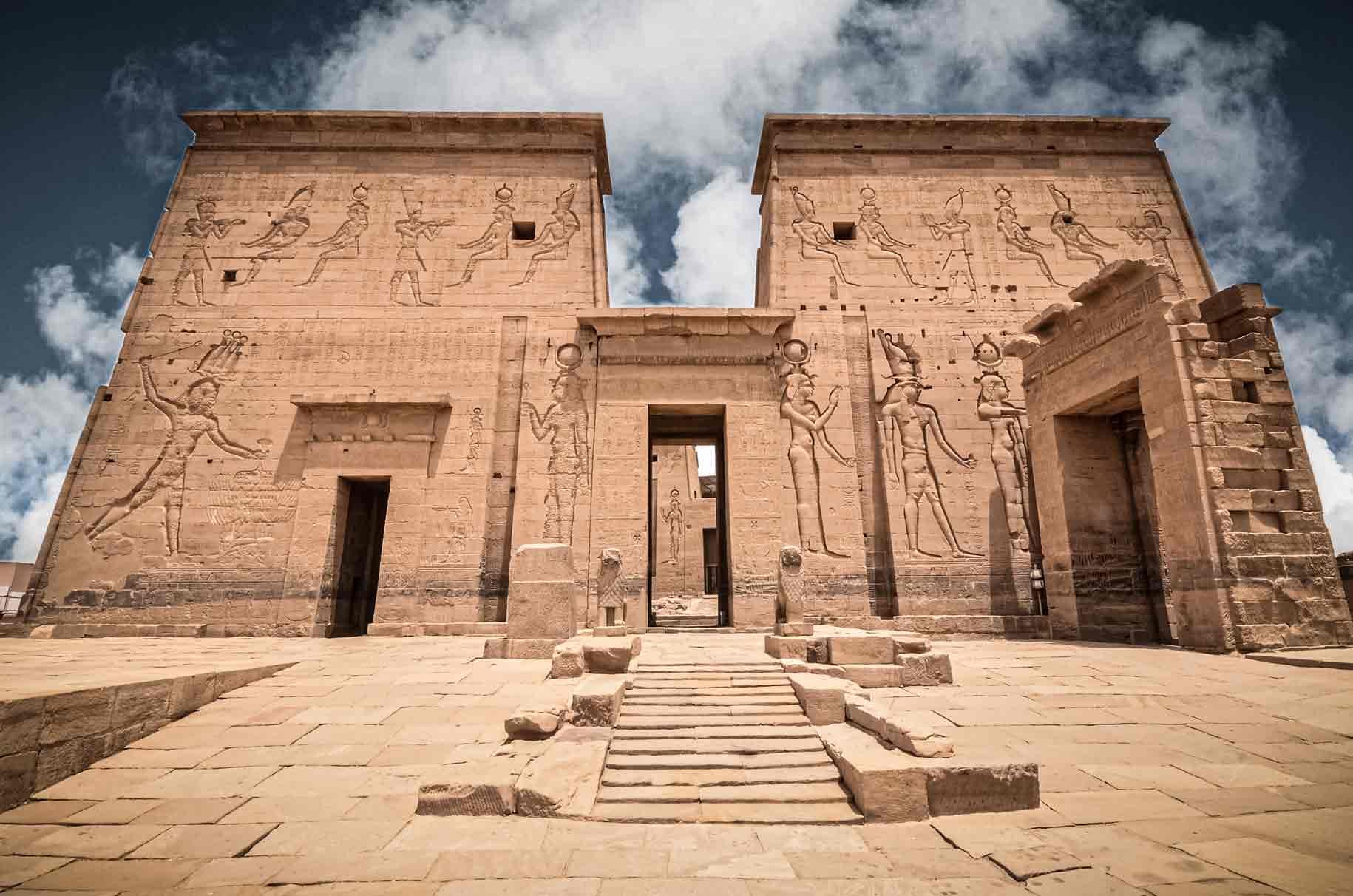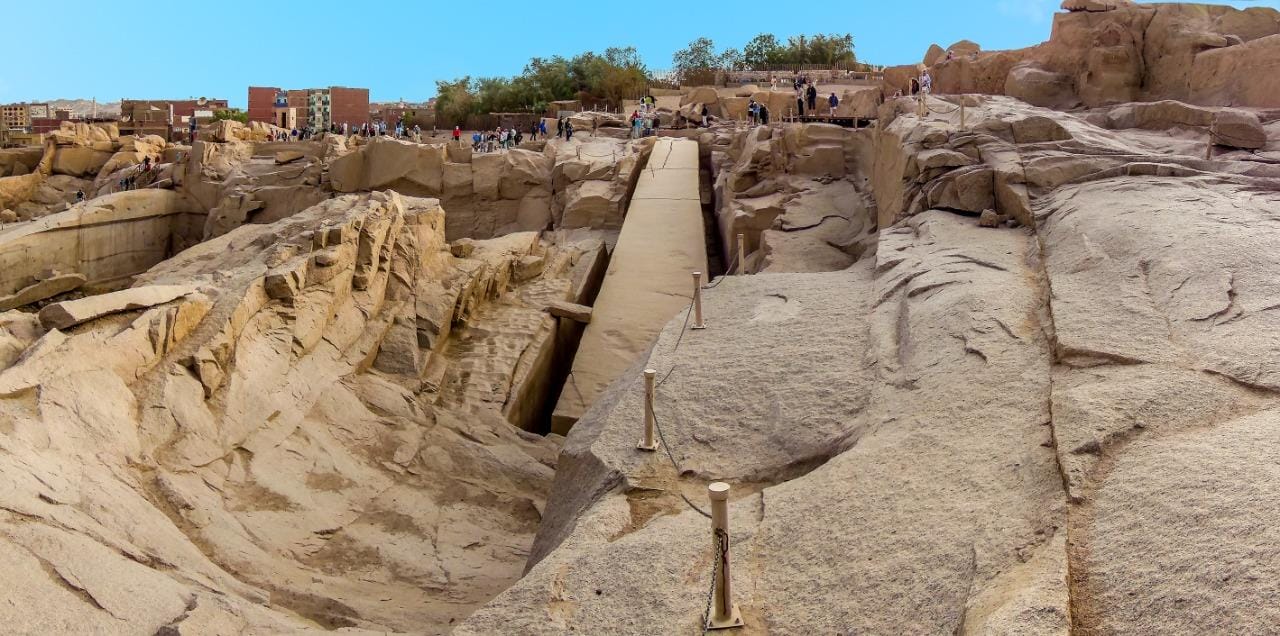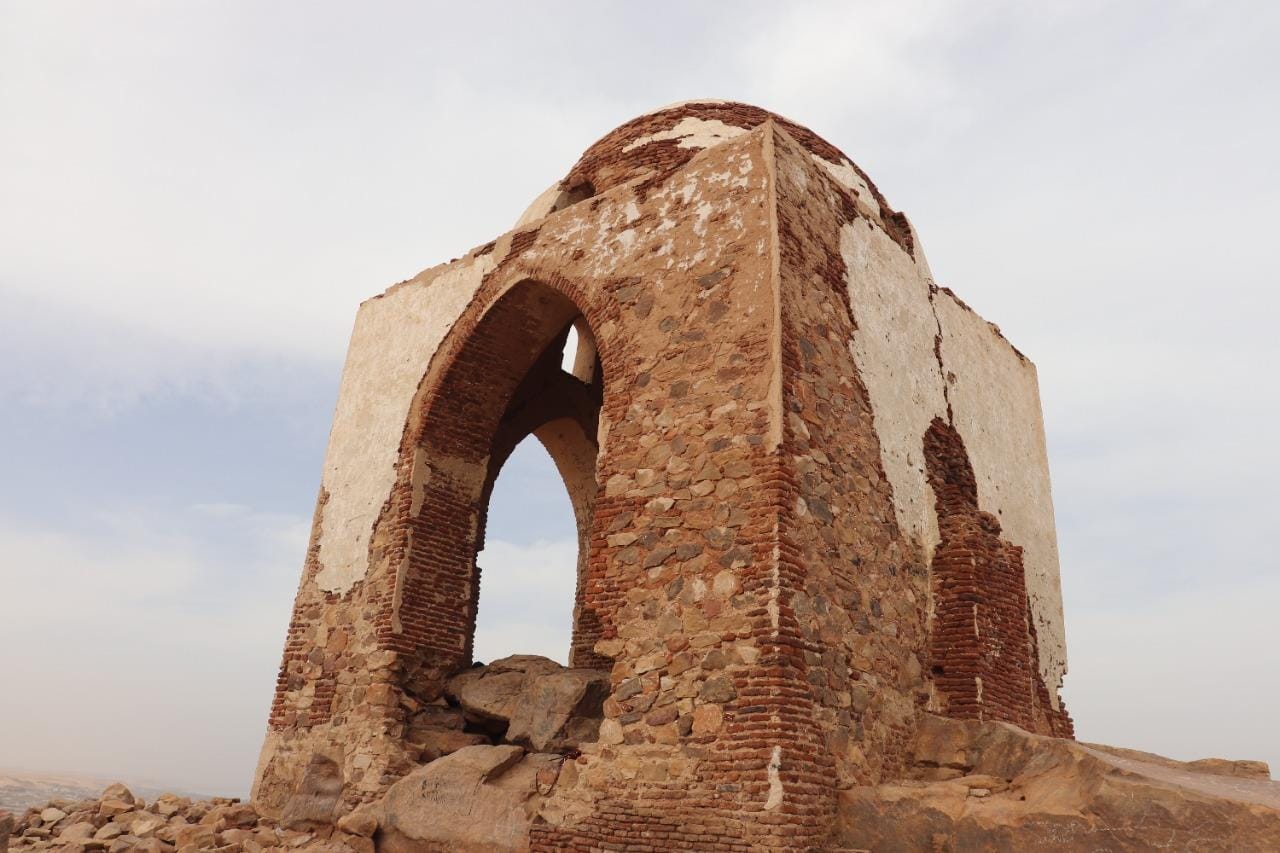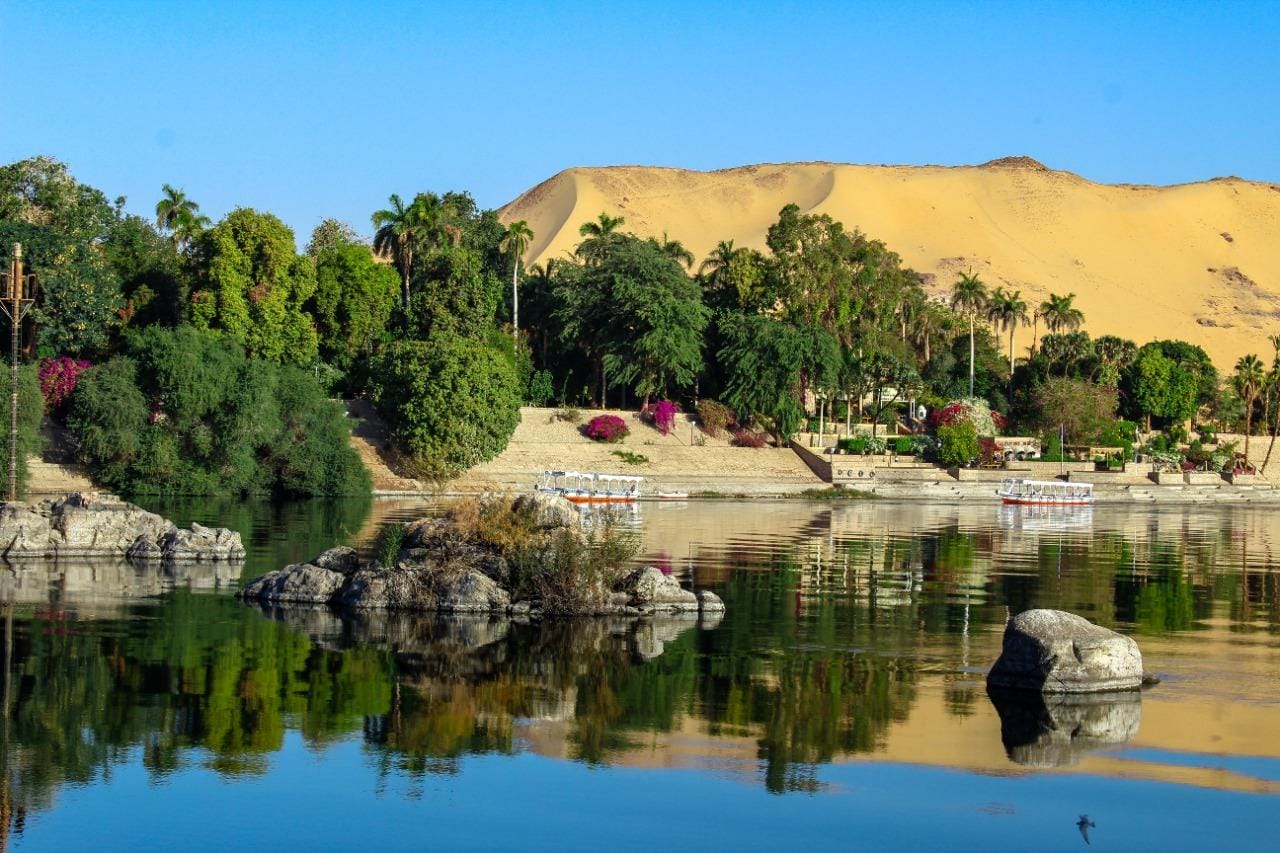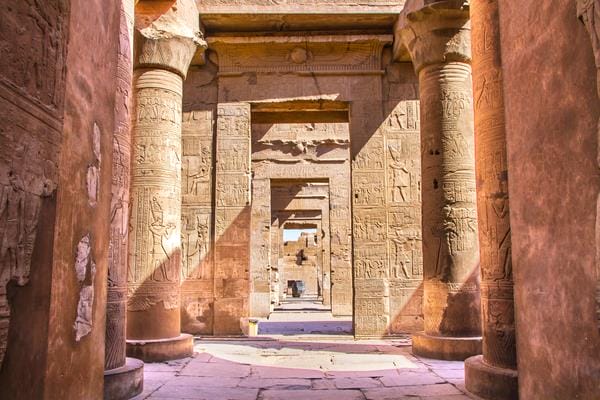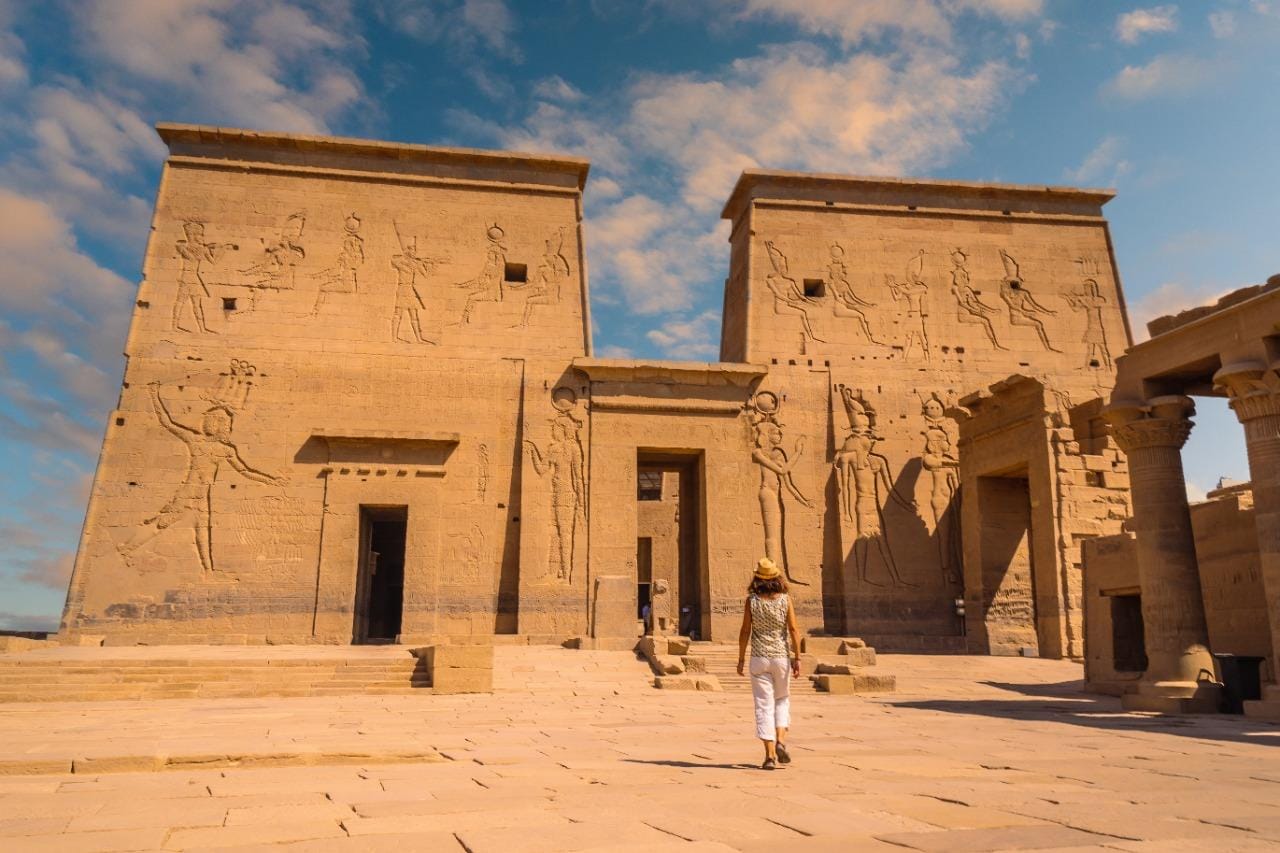Ancient Aswan
Between stretches of rest and relaxation, jump in a boat and explore some of the stunning archeological sites around Aswan, including the iconic monuments of Philae that are accessible only by boat, as well as notable temples located further out in sleepy, agricultural villages.
The Unfinished Obelisk
Did you know modern Aswan is built on top of the ancient city of Swenet (where the modern city gets its name), an important town whose quarries provided much of the granite used for colossal statues, obelisks, and some of the pyramids found throughout Egypt?
Head to Aswan’s Northern Quarries to see how the magnificent monuments we admire in Egypt’s great temples were extracted from stone and examine an abandoned project that gives keen insight into the stone-working techniques of the ancient Egyptians! Said to be commissioned by the female pharaoh, Hatshepsut, the Unfinished Obelisk would have become the largest ever made—nearly one-third larger than any of the obelisks currently in existence and reaching over 1,000 tons in weight. When cracks began to appear in the granite, the ancient craftsmen discarded it, leaving the bottom side still attached to the bedrock, leaving behind historical evidence of how they were made.
Don’t Miss
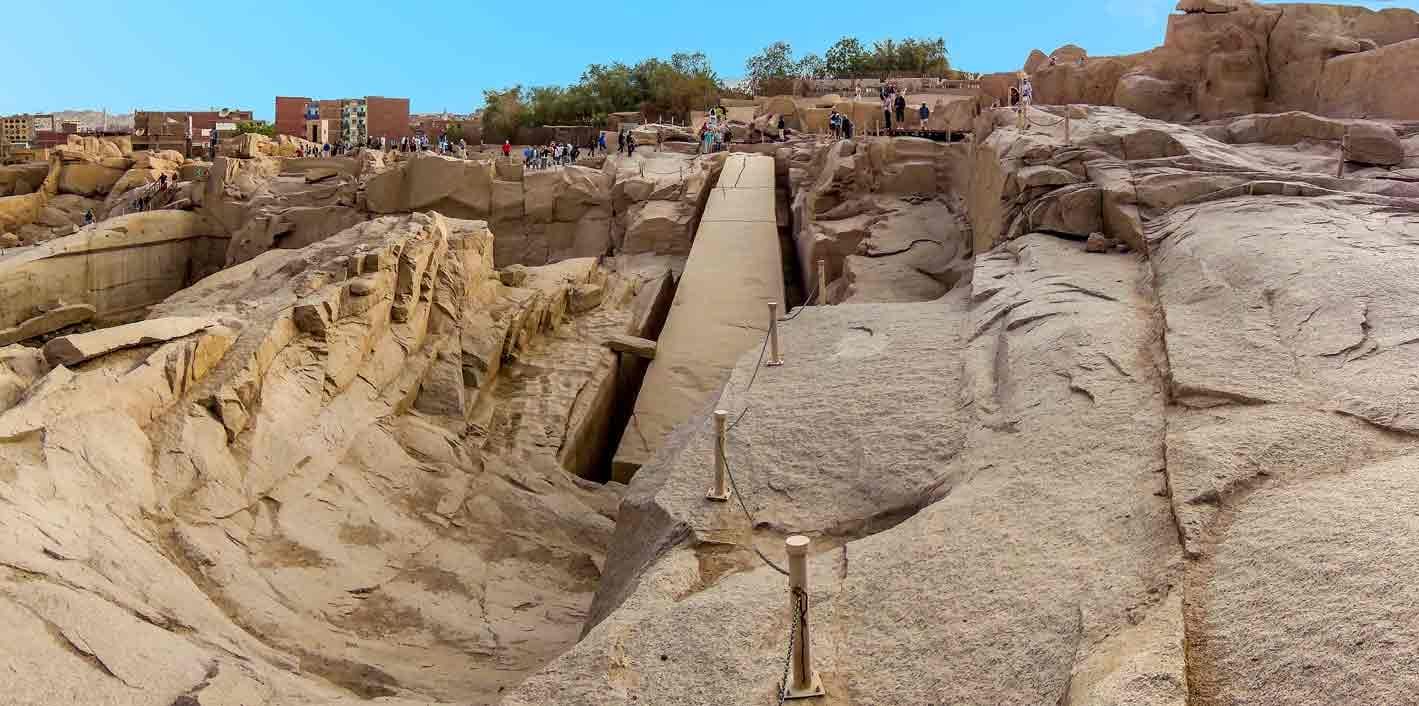
The trenches around the obelisk
In the trenches around the obelisk, you’ll be able to see notes written on the walls in red ink recording the daily work process. All around the site, ancient stone hammers can be found, which were used to pound into the granite rock to extract the obelisk.
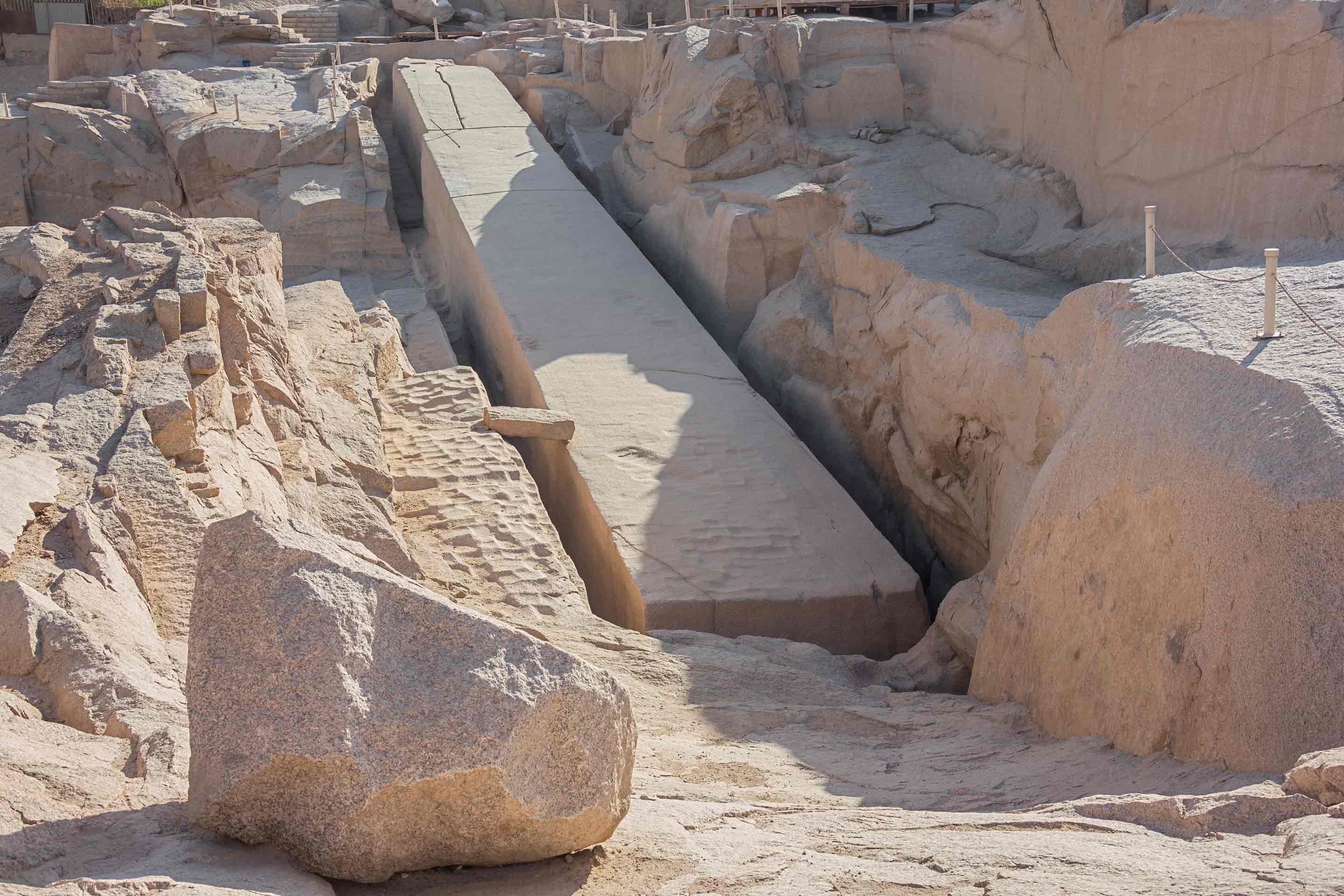
A massive piece of granite
That was in the process of being quarried in ancient times to make a colossal statue. Still attached to the bedrock, it sheds light on how statues were loosened from the bedrock by cutting trenches.
Qubbat al-Hawa
Situated on the West Bank, this necropolis has seen continuous use from the Old Kingdom to the Roman Period. Recent archeological work has led to exciting discoveries, and excavations are ongoing. Of particular note here are the tombs of governors and high dignitaries from the Old to Middle Kingdoms. Five decorated tombs are open to the public on a rotational basis to preserve their integrity, showcasing vivid wall reliefs that depict military campaigns, trade expeditions, hunting and fishing scenes, and more detailed peeks into the lives of these fascinating historical figures.
Don’t Miss
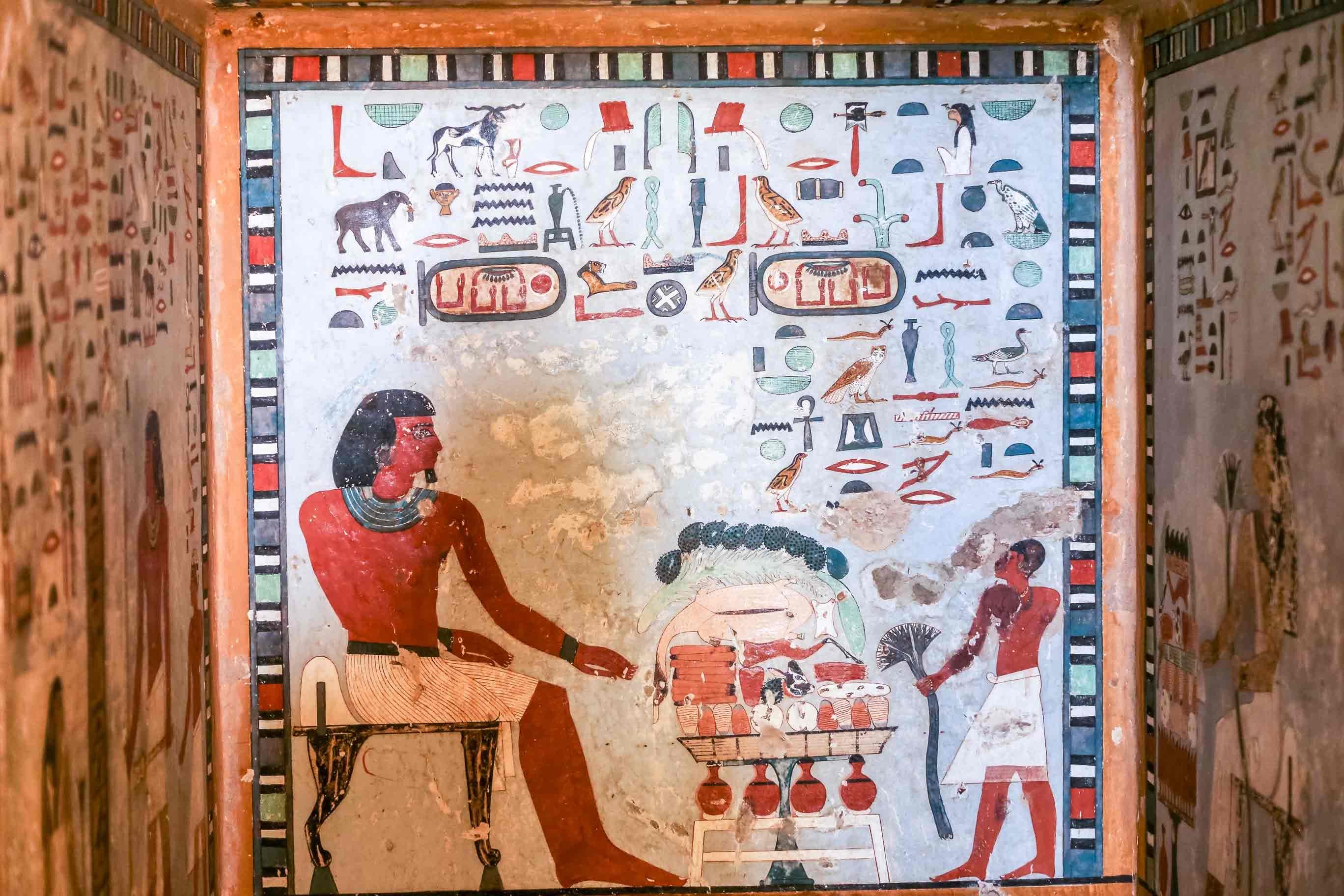
The Tomb of Sarenput II is architecturally very impressive and has vibrant colored reliefs
Depicting the governor with his wife and mother.
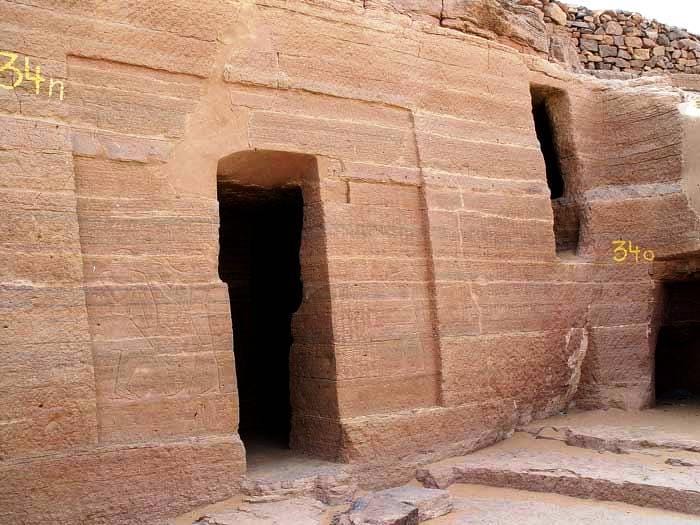
The remarkable hieroglyphic texts in the Tomb of Harkhuf
Governor of the south during the reign of Pepi II.
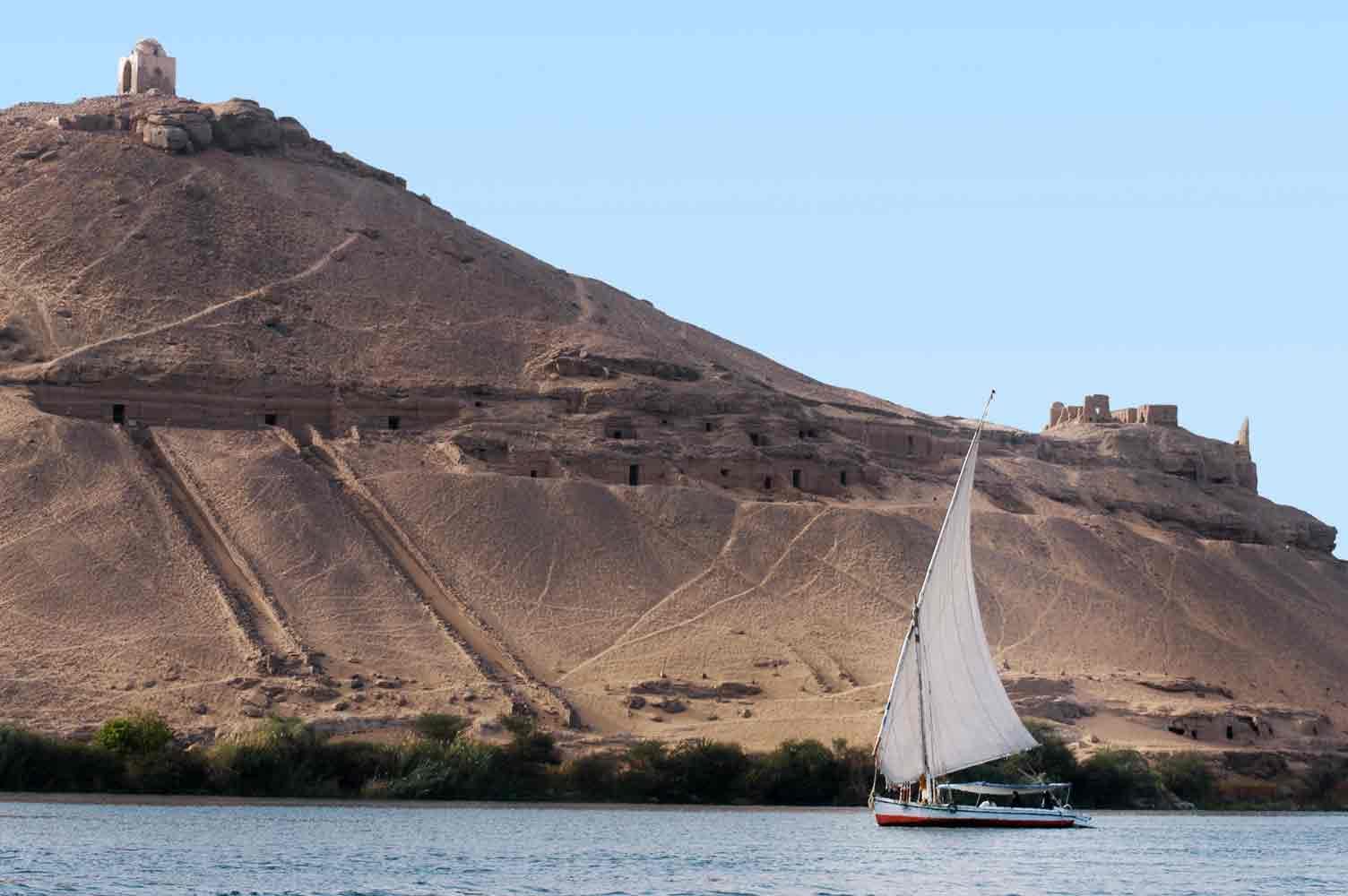
Climbing up the hilltop above the tombs to Qubbat al-Hawa
The tomb of Sheikh Aly Abu al-Hawa, for stunning panoramic views of the Nile and Aswan city.
Elephantine Island
Home to several archeological sites of interest, this island’s storied history is attested 3,000 BC onward, and a visit to Elephantine will allow you to experience a pharaonic town with all its fortifications and temples. Visitors will gain insights into the organization and structure of ancient settlements, religious beliefs, and the daily lives and living conditions of its inhabitants.
The largest structure on-site is the Temple of Khnum, built in honor of the ram-headed god who guarded the waters of the Nile. Other notable sights include the remains of a small step pyramid from the late 3rd to early 4th Dynasty, a reconstructed 18th Dynasty temple built by Hatshepsut and Thutmose III and dedicated to the goddess Satet, a cemetery for sacred rams, and the ruins of the ancient city of Elephantine itself.
Don’t Miss
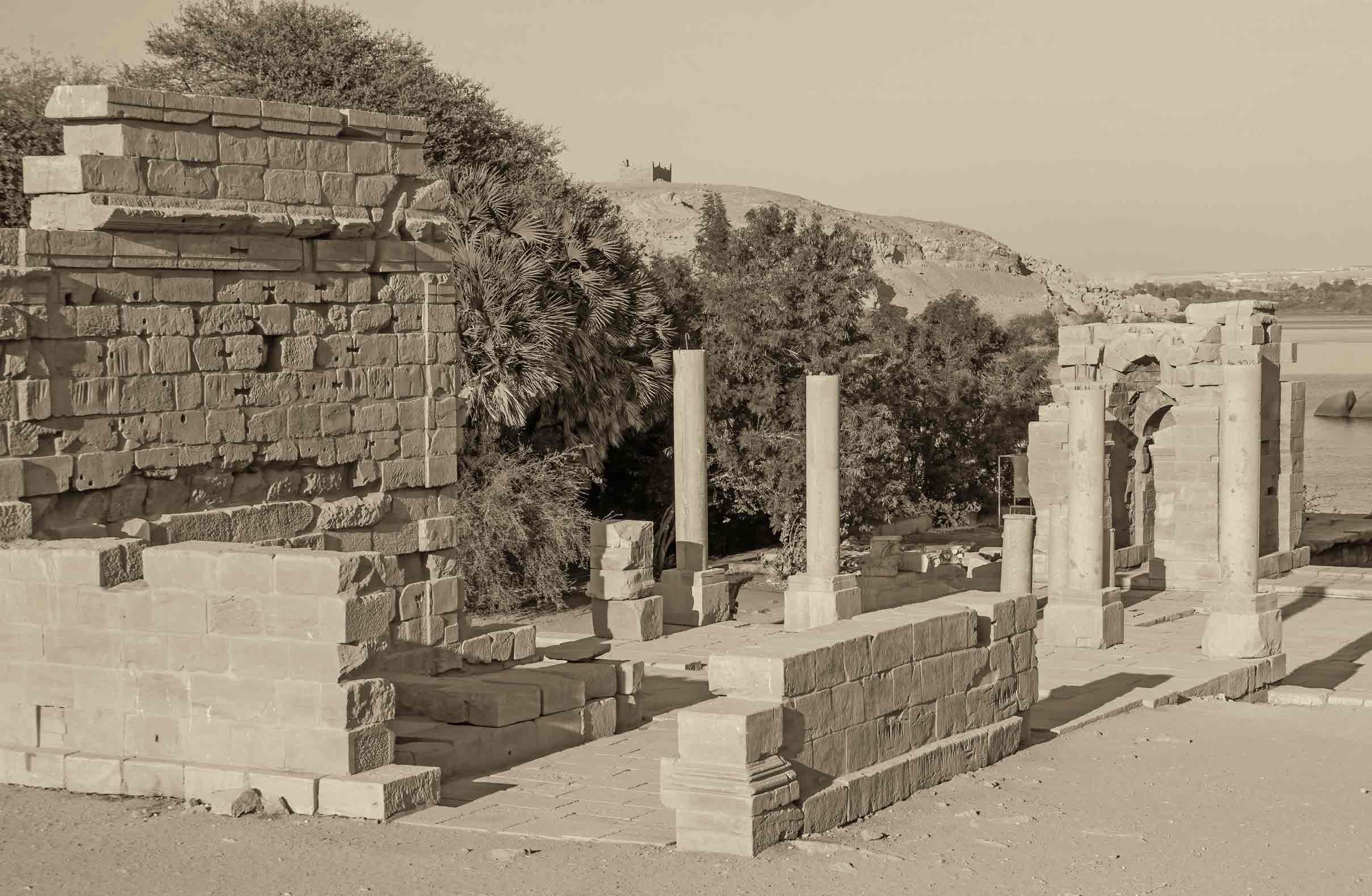
The ruins of Elephantine
Or ancient Abu (Aswan's most ancient settlement), which include the Old Kingdom Temple of Khnum and the Temple of Satet.
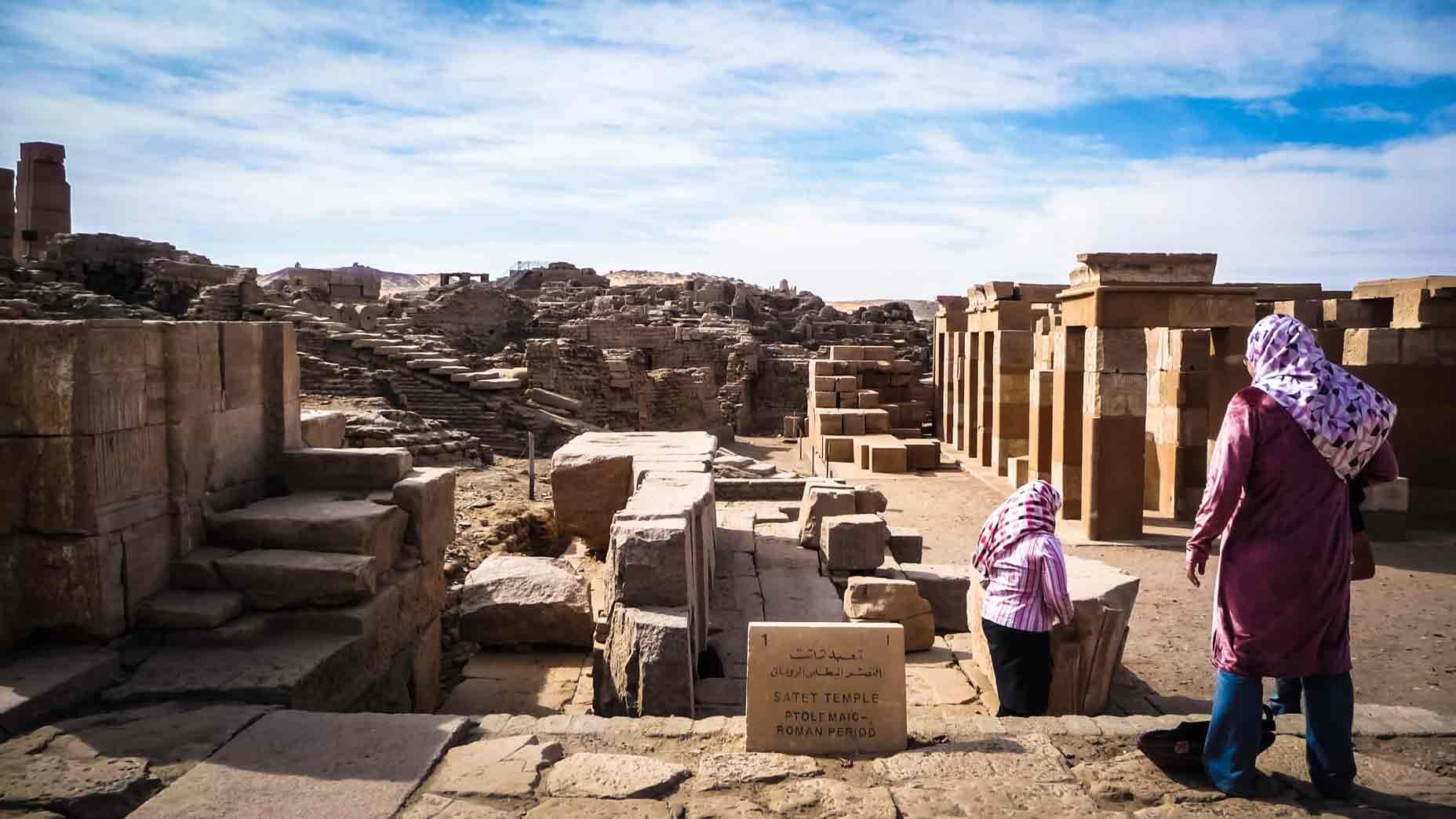
The earlier, also reconstructed
Iterations of the Temple of Satet, one from the 11th and the other from the 12th.
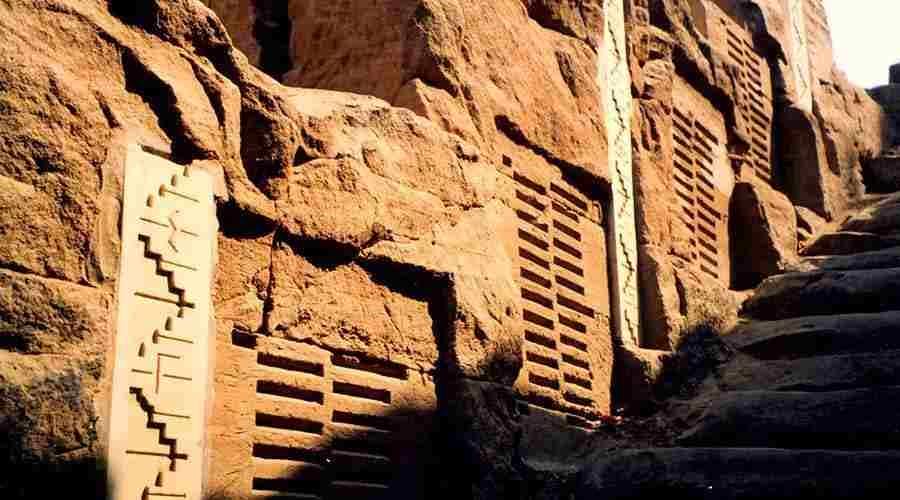
The Nilometer of the Temple of Satet
Thanks to Nilometers like this one, the ancient Egyptians could have a prediction for what the harvest was going to be like.
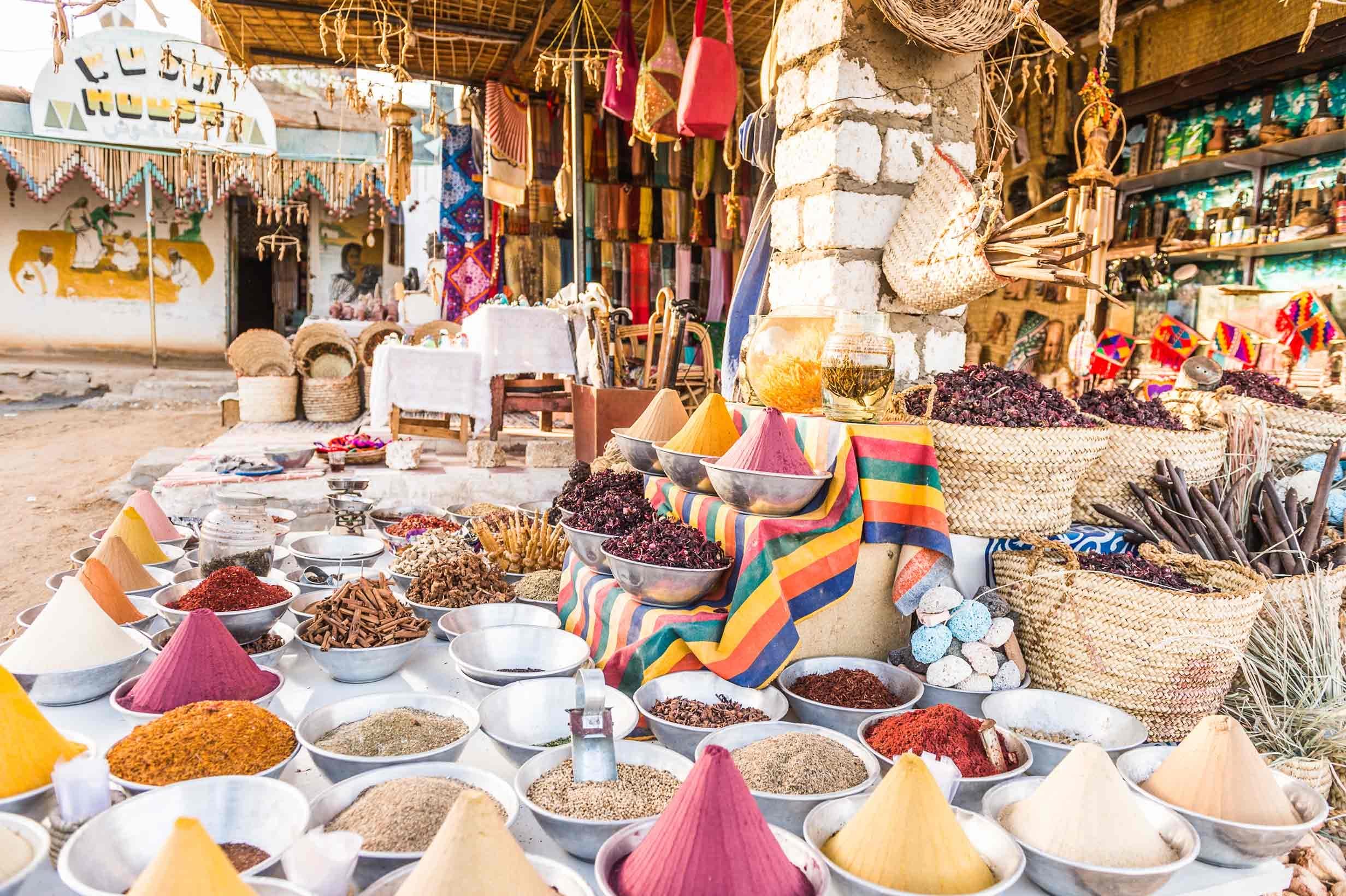
Nubian village of Koti
Complete your trip with a stop in the nearby Nubian village of Koti for refreshments and browse the local crafts and souvenir stands.
Philae
Located on its own island, surrounded by impressive rock formations jutting out of the Nile, the picturesque Temples of Philae are only accessible by boat, which adds to their mystical charm, particularly if you visit in the evening. These monuments were previously located on the original island of the now-submerged Philae just next door, but with the construction of Aswan High Dam in the 1960s, they were dismantled stone by stone, beginning in 1972, and transferred to the nearby island of Agilkia. The move was completed by 1980. The massive collaborative restoration project between UNESCO and the Egyptian government involved the dismantling, transfer, and reconstruction of 40,000 pieces in total.
Dating back to the Ptolemaic Period, the main temple was built to honor the ancient Egyptian goddess Isis, her husband Osiris, and son Horus, making it a family affair. This well-preserved temple was later used as a church, with wall carvings depicting Coptic crosses and ruins found within the temple grounds. There are also hundreds of pieces of graffiti in Demotic, Greek, Meroitic, and Latin left behind by ancient visitors and priests throughout the ages.
Don’t Miss
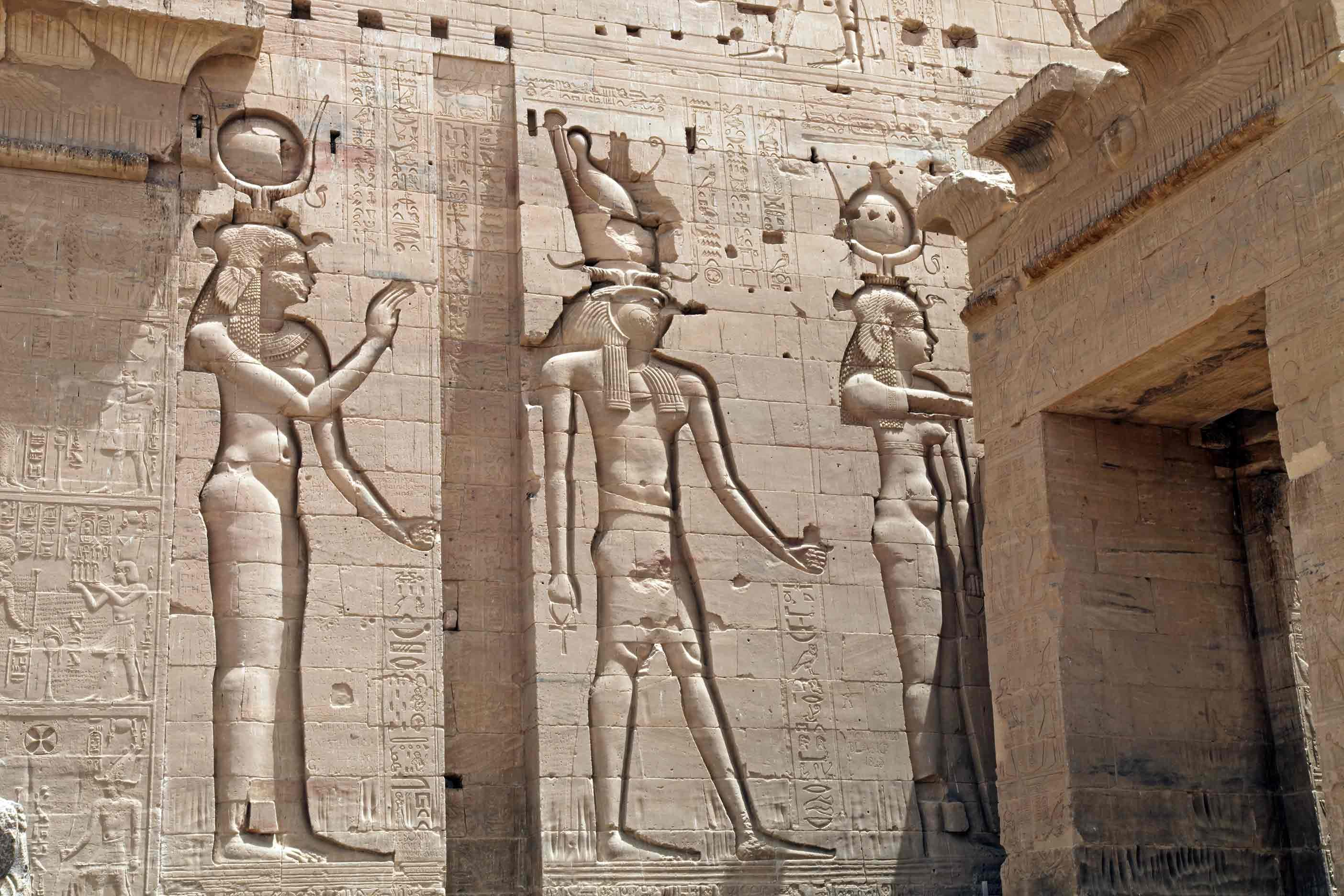
The Birth House to the west (left) of the forecourt
Dedicated to the birth of Horus, the son of Isis. Illustrative reliefs in the last chamber depict scenes from his childhood showing Horus as a falcon in the Delta’s swamps and Isis breastfeeding him.

The sanctuary of the Great Temple of Isis
A stunning little room buried deep within the temple with detailed wall reliefs of the king performing rituals for Isis.
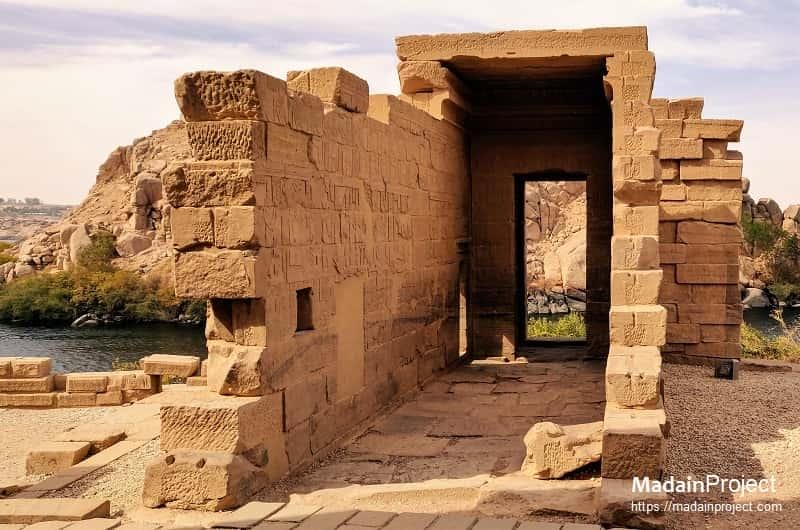
The Gate of Hadrian
Built during the reign of the Roman emperor Hadrian, has stunning reliefs, the most fascinating of which depicts the point from which the annual Nile flood originated in ancient Egyptians religious belief.
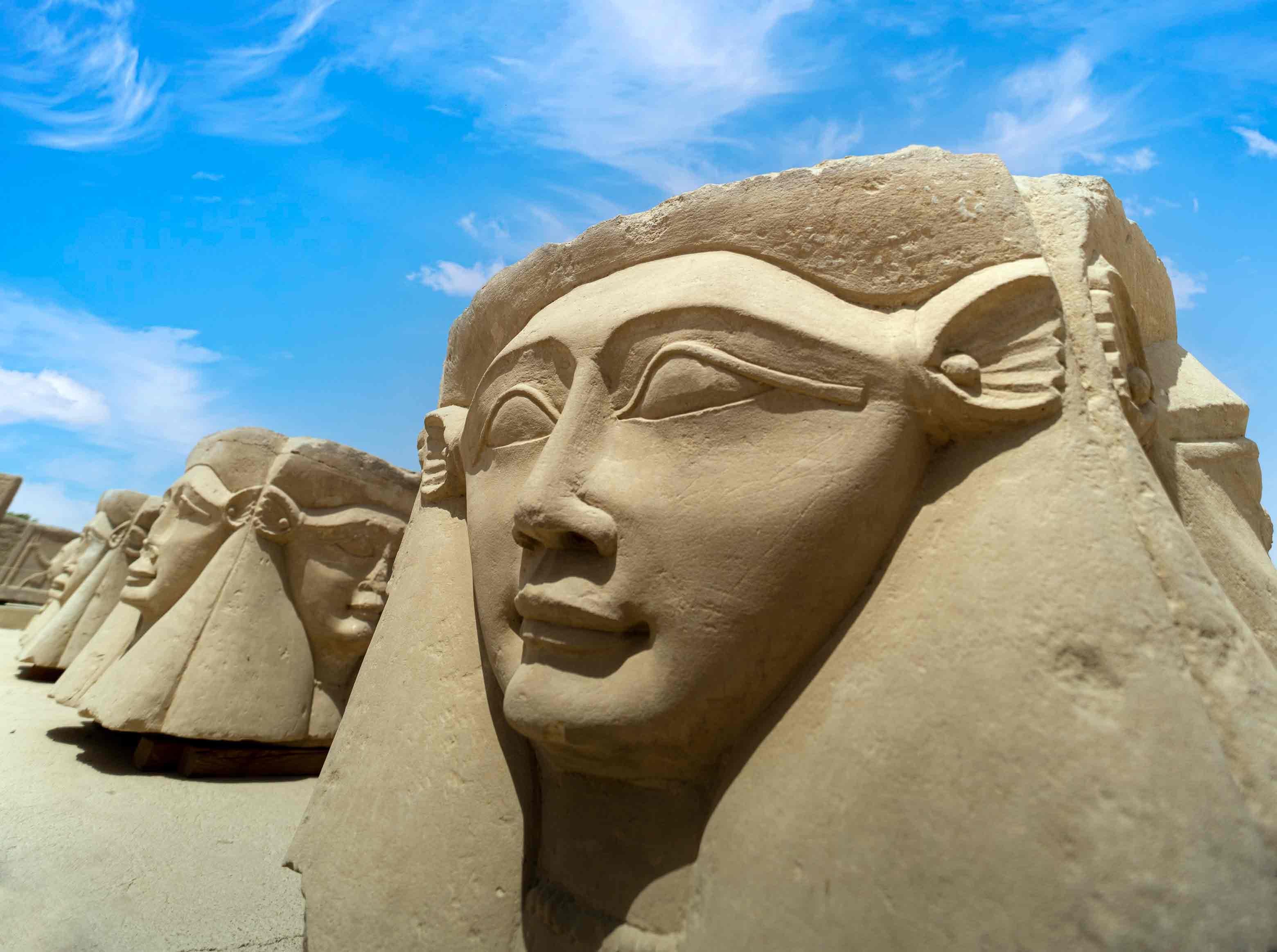
The tiny Temple of Hathor
Decorated with charming reliefs of flute-players and harpists, and the god Bes playing a tambourine, dancing, and playing a harp.
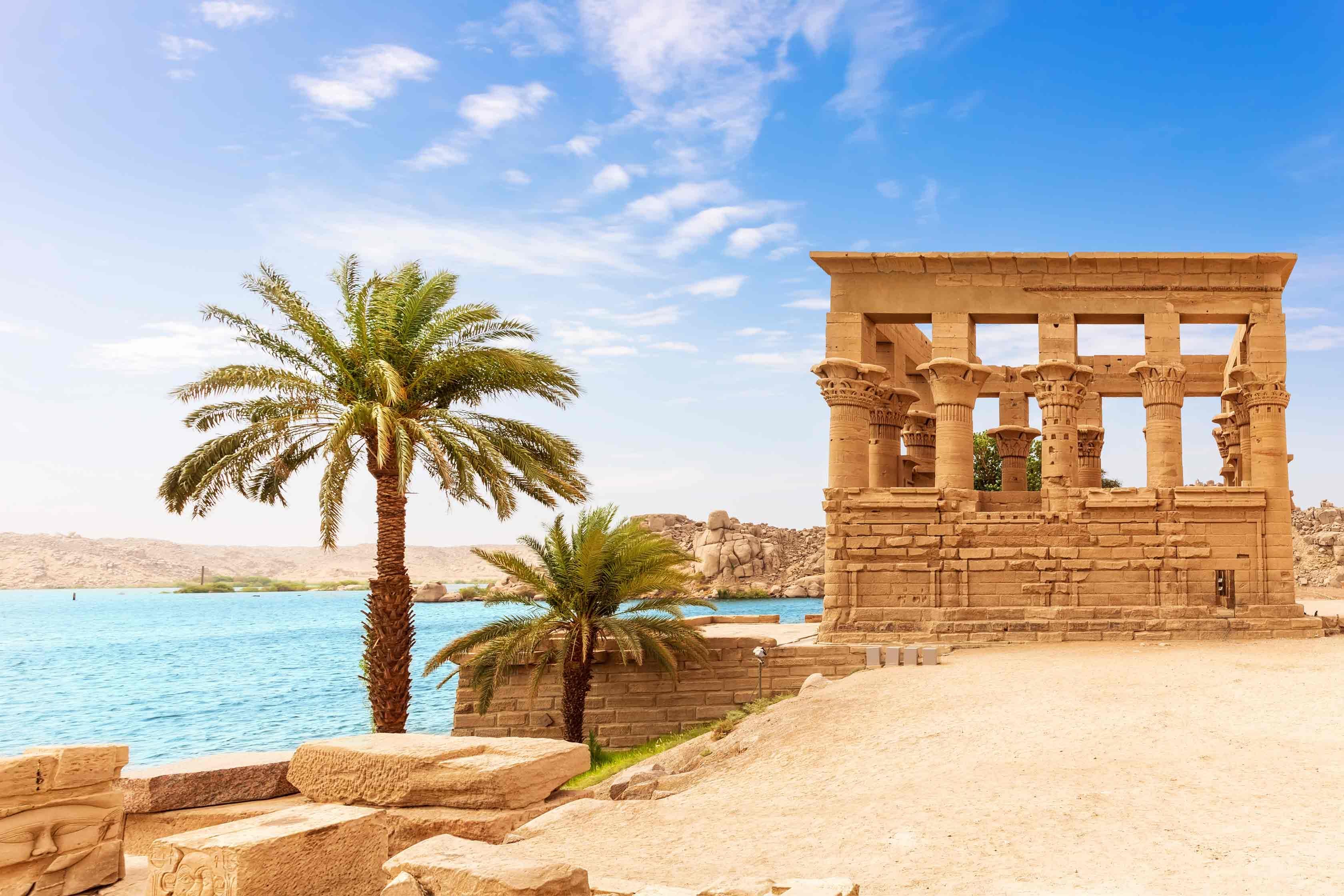
The Kiosk of Trajan
An unfinished temple, so called because of scenes inside the structure showing the Roman emperor Trajan presenting offerings to the gods.

The Sound & Light Show in the evening
When the temple comes back to life like Osiris! Enjoy this epic narration taking you on a journey through time, sharing the secrets of the temple and island.
Temple of Kom Ombo
Day Trips Worth Taking
Further down the Nile from the city center, this unusual temple is dedicated to two deities, the crocodile god Sobek and Harwer, a form of the falcon god Horus. Unique in its architecture, instead of having just one axis, two parallel axes run through the temple’s court, hypostyle halls, and vestibules, terminating in two neighboring sanctuaries. Many well-preserved and interesting reliefs can be found here, and the intricately detailed and varied column capitals are a treat for the eyes.
Don’t Miss
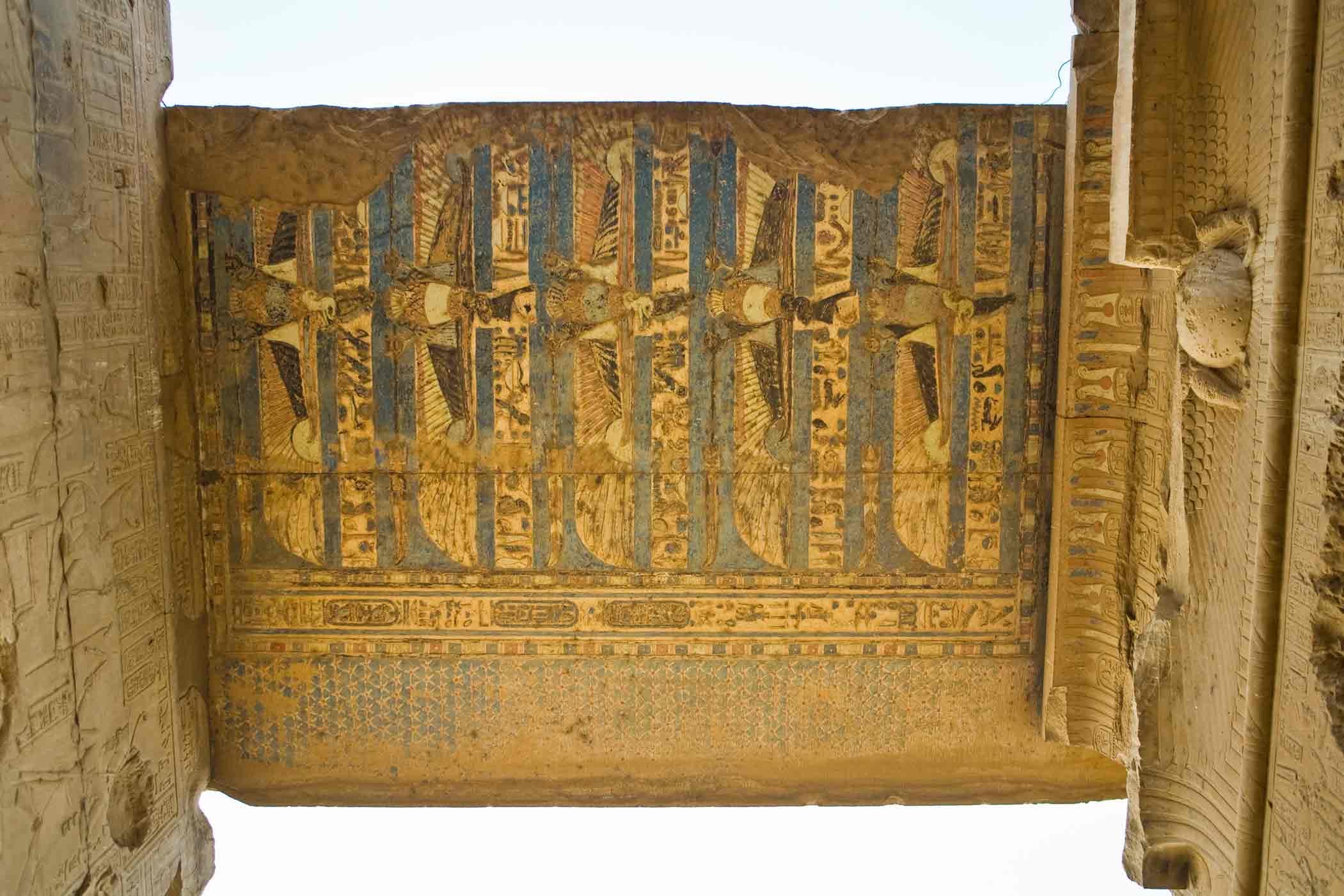
The beautifully decorated surviving portion of the ceiling
just before the sanctuary of Harwer on the left and admire its amazingly preserved colors.
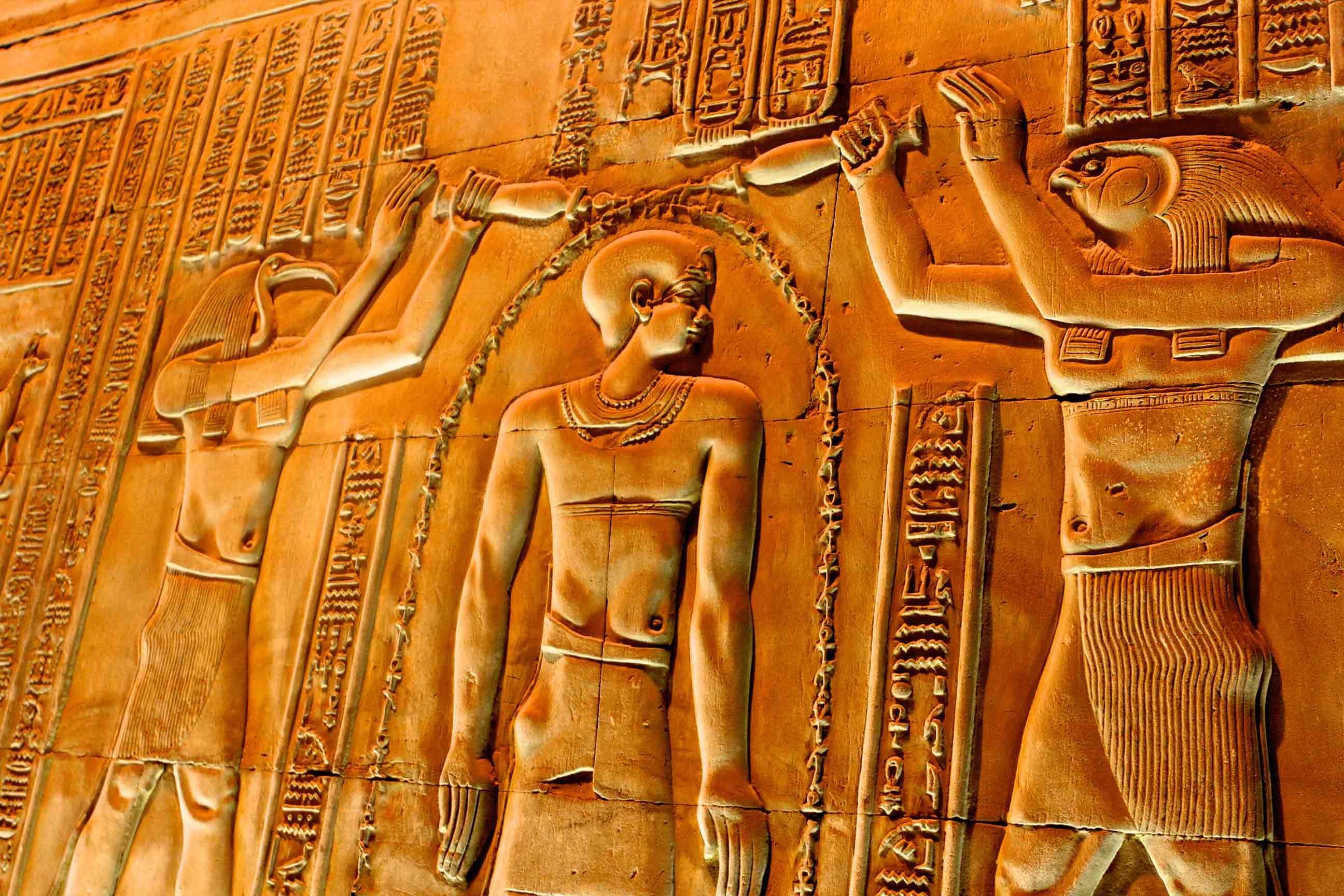
The calendar of temple rituals and festivals carved
In a tabular format on the right side of the second vestibule.
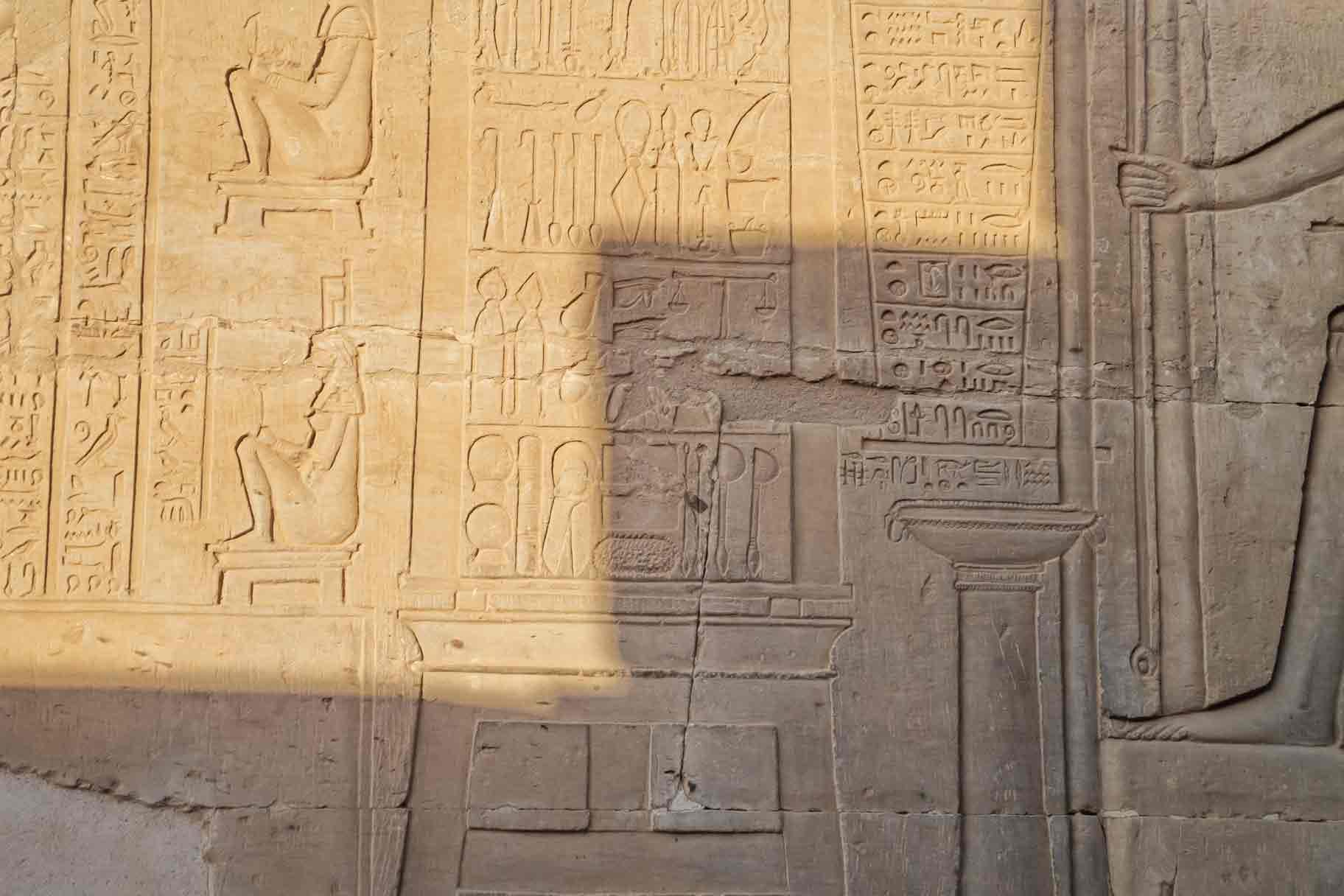
The scene with the surgical
Instruments near the northeastern corner of the outer corridor of the temple.
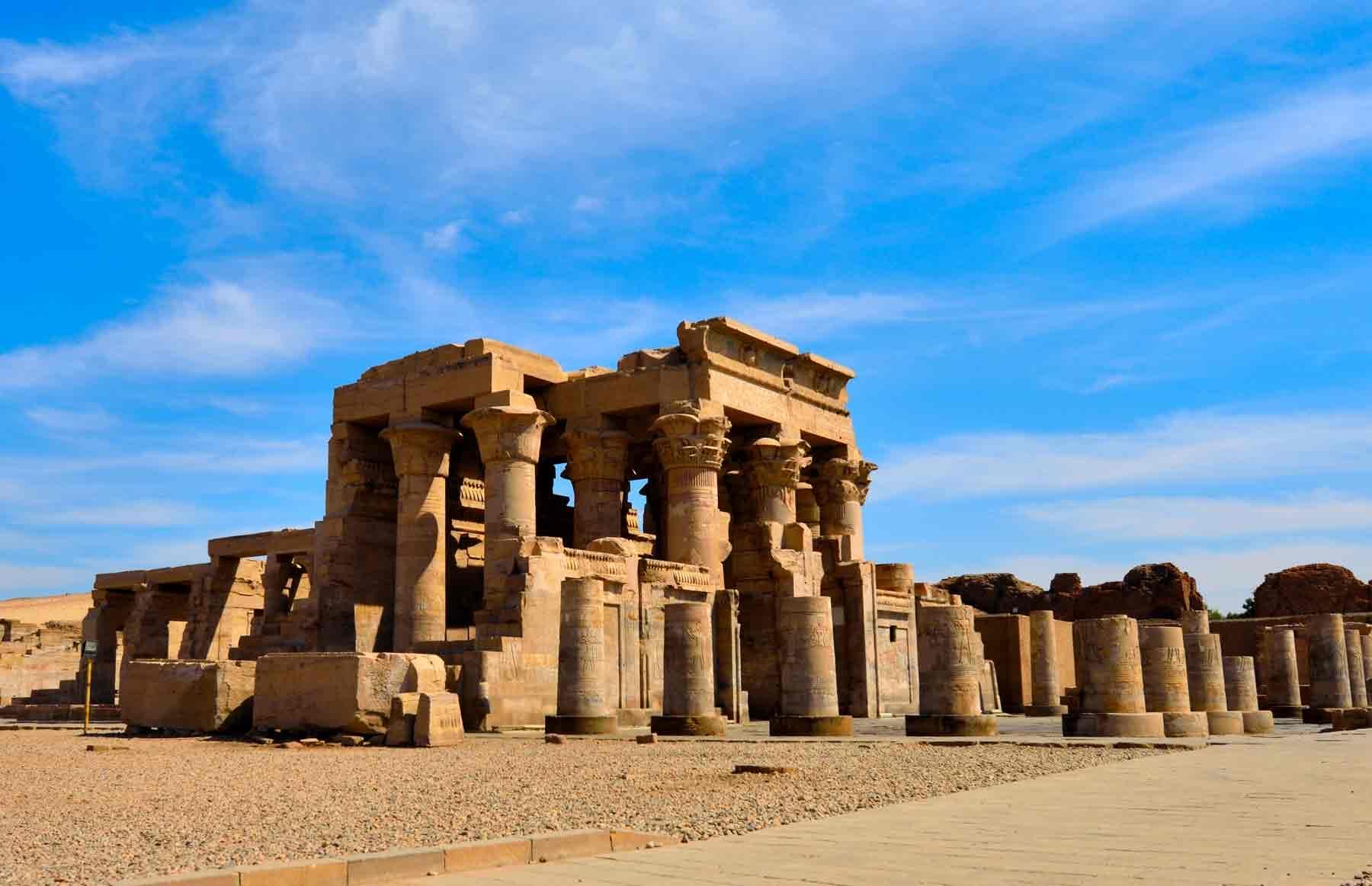
The Crocodile Museum
With hundreds of mummified crocodiles on display! In ancient times, crocodiles gathered in droves near the temple to catch sun on the banks of the Nile.
Temple of Edfu
Located at nearly the halfway point between Luxor and Aswan, this massive and imposing temple is built to honor and worship the falcon god Horus. Completed in the 2nd century BC, the temple is relatively new and the best-preserved ancient Egyptian temple. Feel the sheer might and power of the history held within the temple’s walls as you pass through its massive sandstone pylon (gateway) and admire the detailed scenes and inscriptions decorating its interior chambers.
Don’t Miss
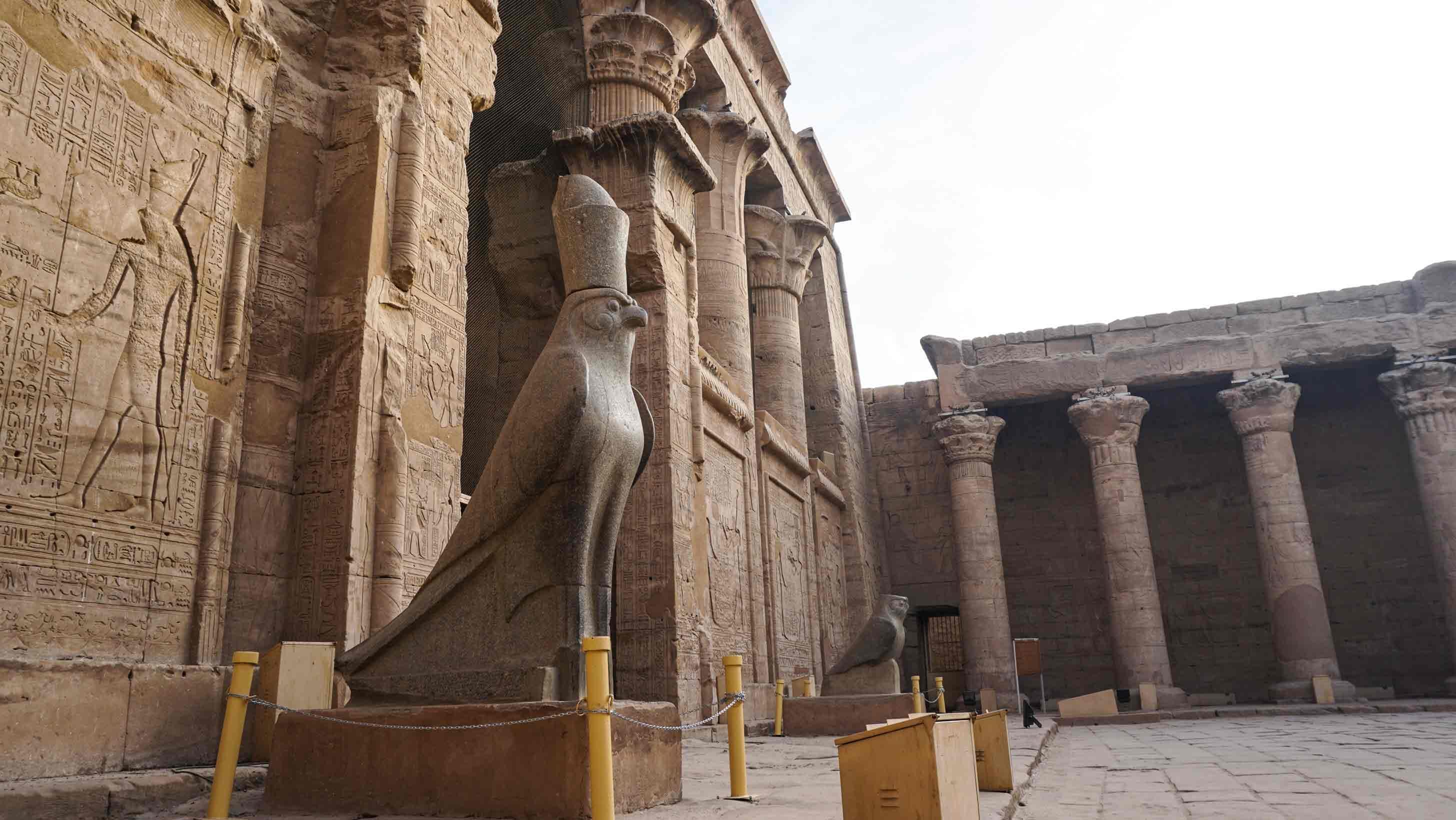
The black granite statue of Horus
located in the massive forecourt of the temple. He wears the Double Crown of Egypt and guards the entrance into the temple.
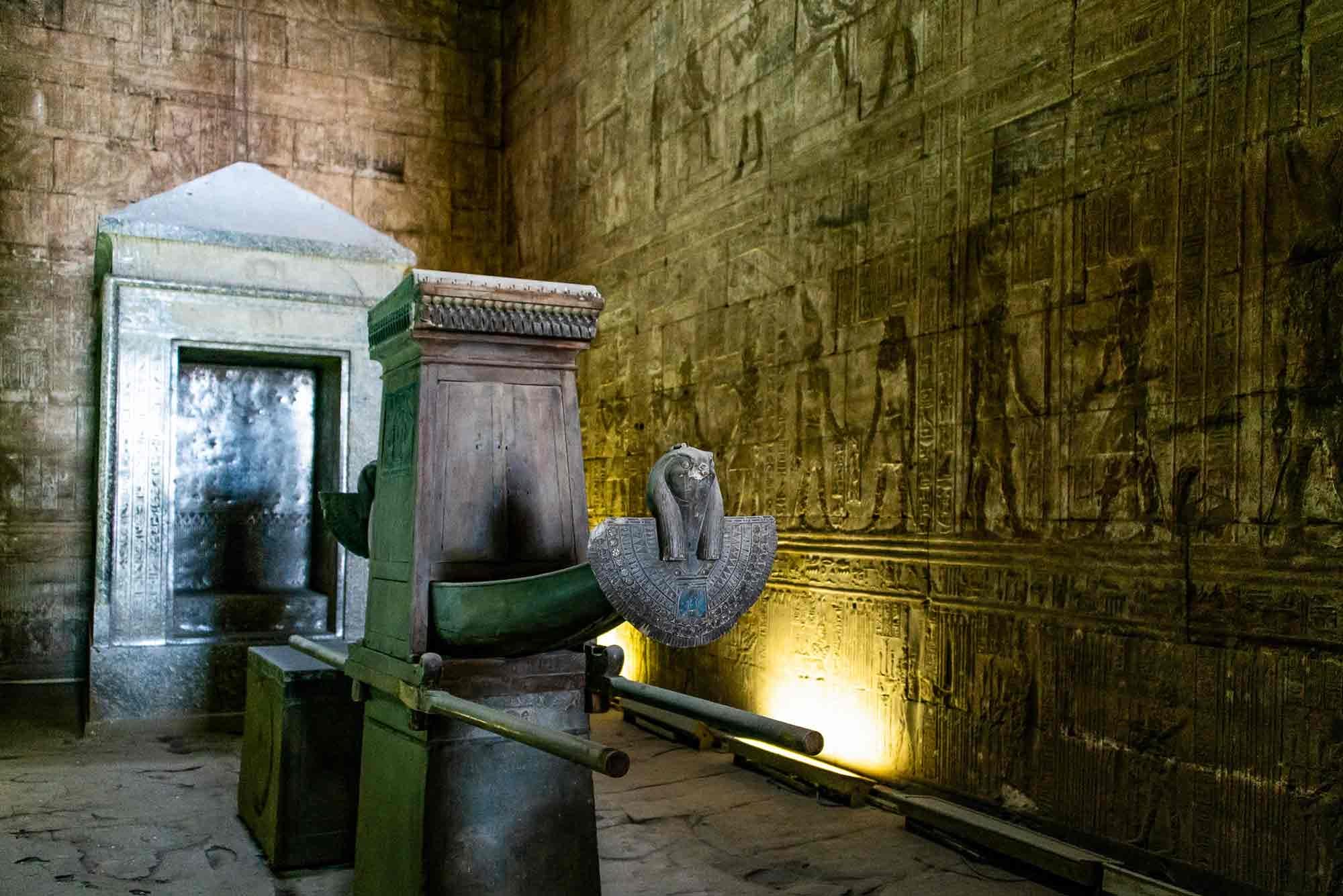
The Sanctuary
Where the cult statue of Horus once stood inside a granite shrine. A replica of the wooden shrine shaped like a ship and used to transport the image of Horus during processions can be found in the same chamber.
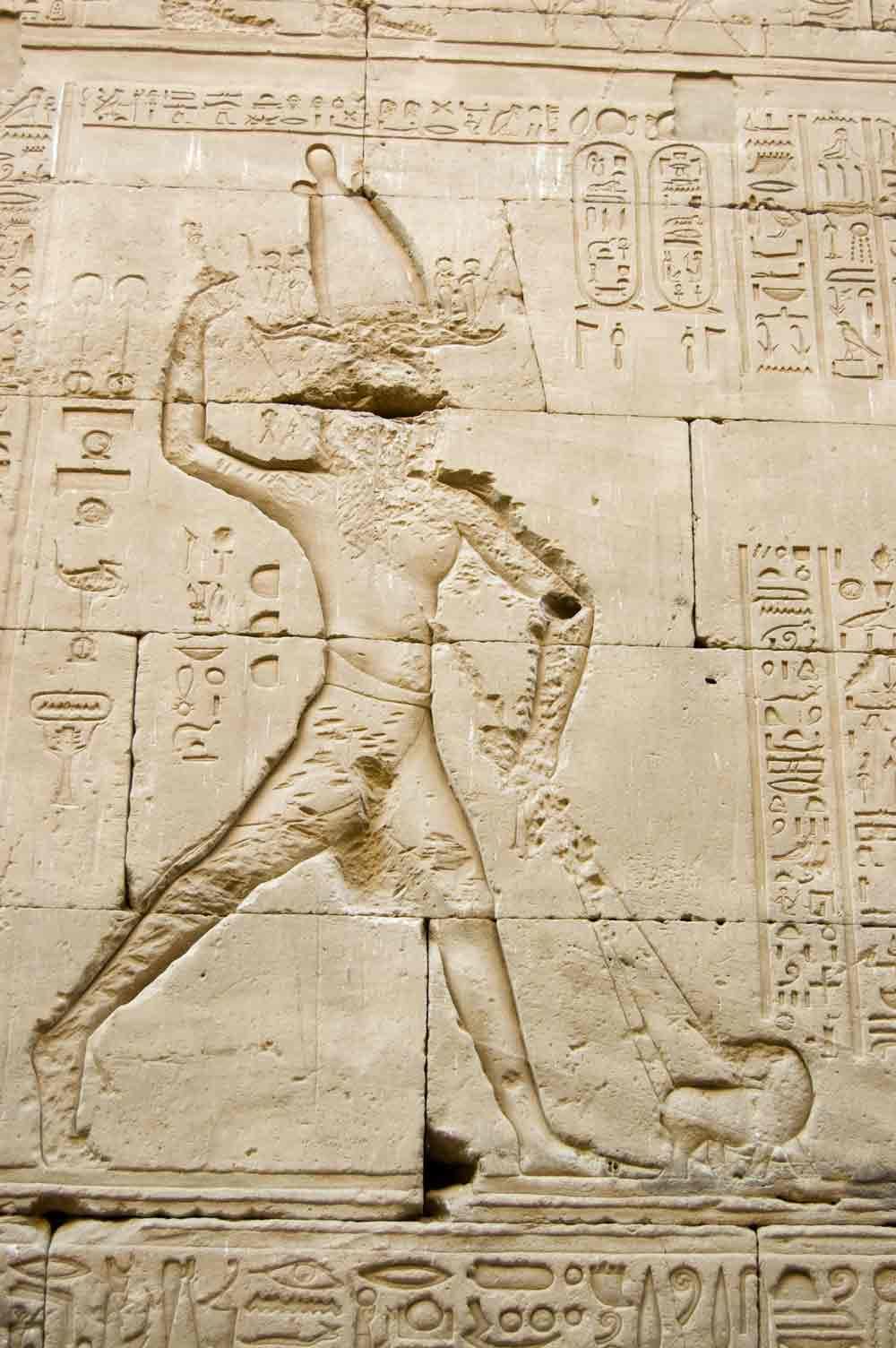
The Inner Passageway
Running around the back half of the temple, its west wall decorated with interesting reliefs showing the rituals symbolizing Horus defeating Seth, the murderer of his father Osiris. In these scenes, Seth is shown as a diminutive hippopotamus being harpooned by the pharaoh and Horus.
